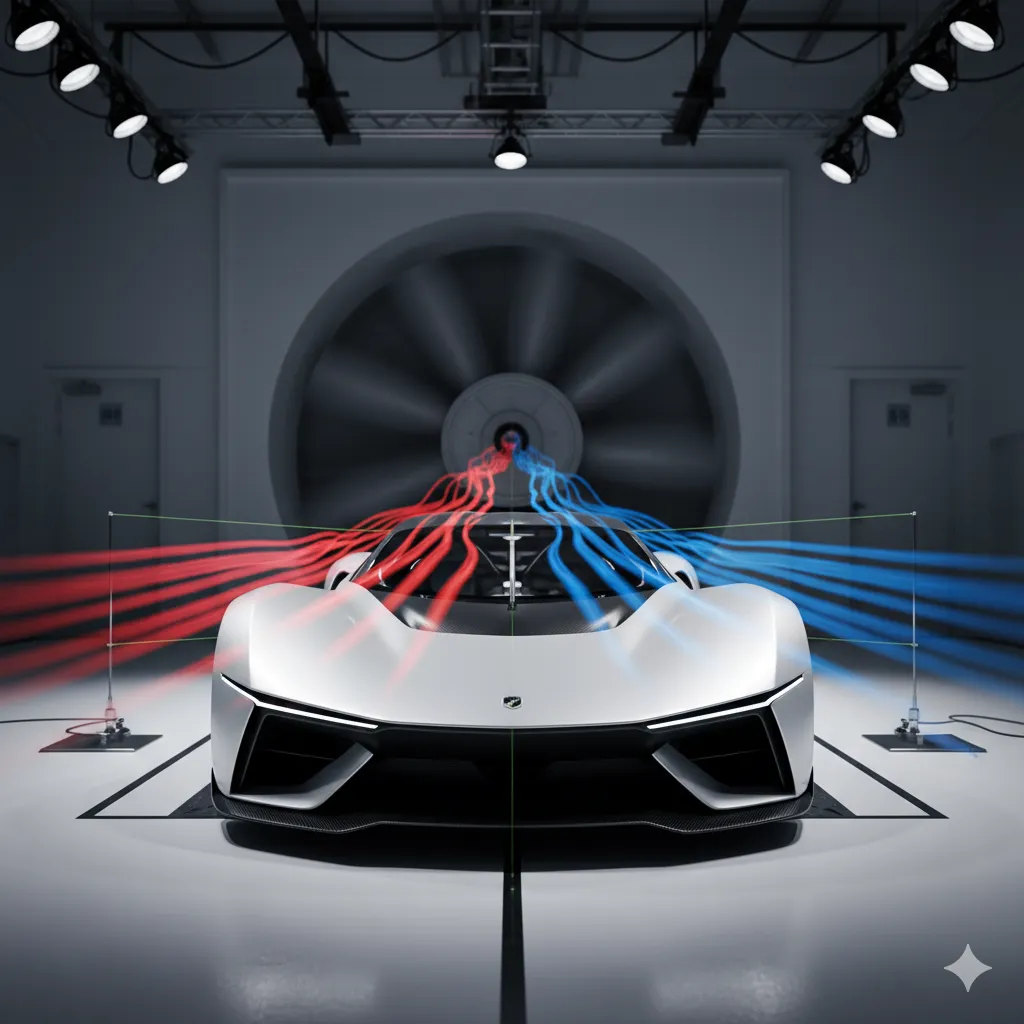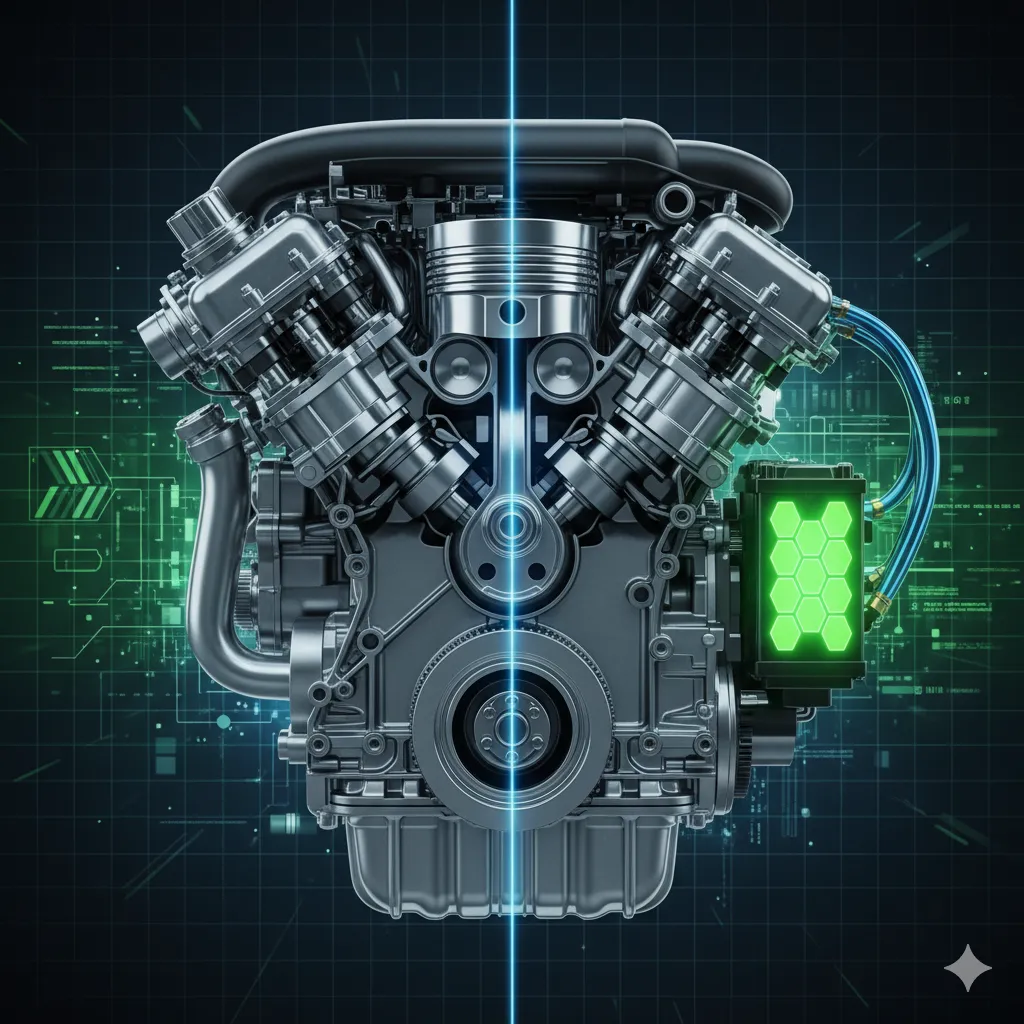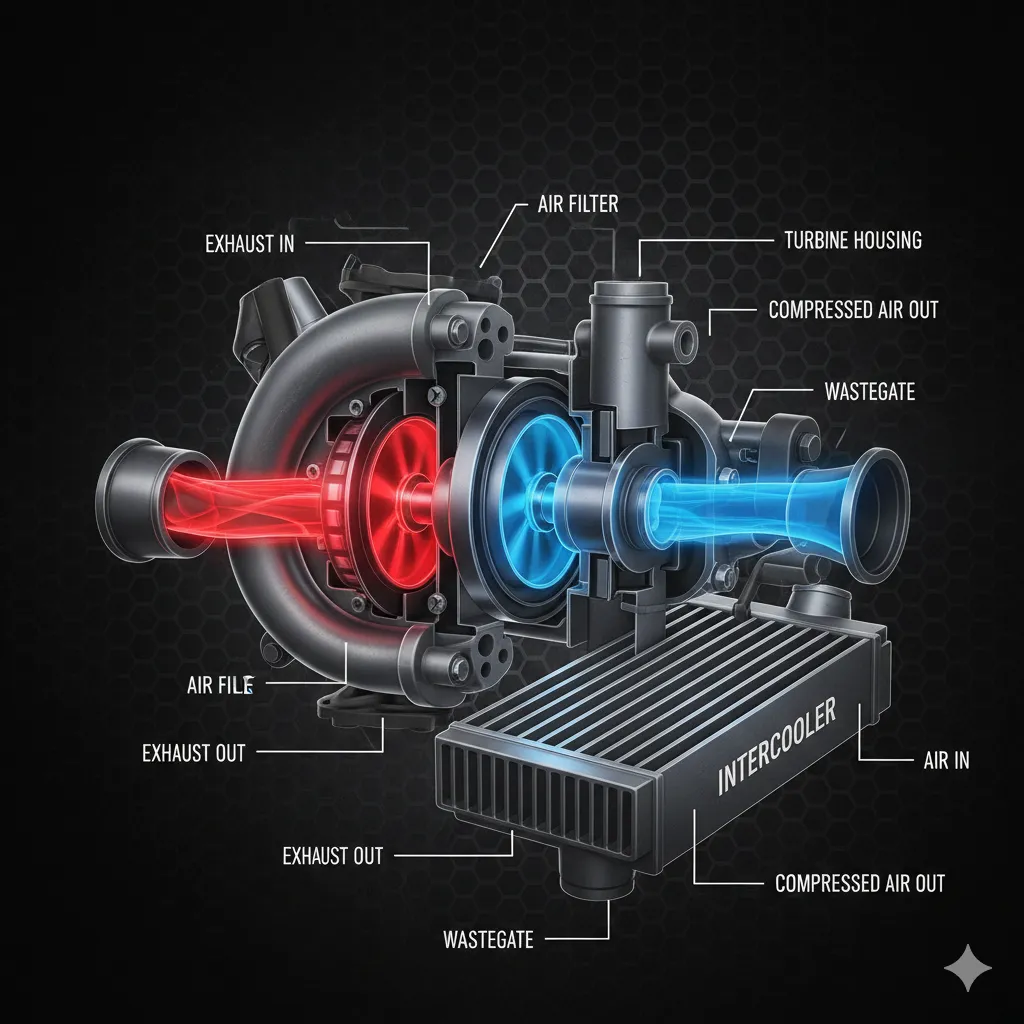
Car Aerodynamics: Boost Performance and Fuel Efficiency
🚗 Car Aerodynamics: Boost Performance and Efficiency.
The Invisible Force: How Car Aerodynamics Affect Performance
Have you ever wondered why sports cars look so sleek and low to the ground, or why modern electric vehicles often have smooth, simple shapes? It’s not just about style; it’s about a fundamental principle of physics: car aerodynamics. This "invisible force" is the secret weapon that dictates everything from your car's top speed and handling to its fuel efficiency and even how quiet the cabin is on the highway.
In simple terms, aerodynamics is the study of how air flows around a moving object. For a car, mastering this science means overcoming air resistance—a significant challenge that grows exponentially the faster you drive. Engineers work tirelessly to sculpt a car's body to cheat the wind, and understanding their methods will give you a new appreciation for the engineering marvel parked in your driveway.
Let's dive into the fascinating world of car aerodynamics and see how tiny changes in design translate into massive differences in performance and economy.
Understanding the Core Forces: Drag and Lift
Two primary forces of aerodynamics interact with your vehicle as it moves: drag and lift.
What is Aerodynamic Drag?
Aerodynamic drag is the enemy of speed and efficiency. It is the force that opposes a vehicle's motion through the air. Imagine sticking your hand out the car window at high speed—the force pushing your hand back is drag. This force is comprised mainly of two components:
-
Pressure Drag: This is caused by the air piling up in front of the car and the vacuum (low-pressure area) created behind it. A boxy shape creates a huge vacuum, which essentially sucks the car backward, increasing drag dramatically.
-
Friction Drag (Skin Friction): This is the resistance created by air rubbing against the vehicle's surface. While smaller than pressure drag, every texture, gap, or poorly fitted panel adds to it.
The key to understanding drag is the Coefficient of Drag ($\text{C}_{\text{d}}$). This is a dimensionless number that quantifies how streamlined a vehicle is. A lower $\text{C}_{\text{d}}$ means less drag and better aerodynamic performance. For most modern passenger cars, the $\text{C}_{\text{d}}$ typically ranges between 0.25 and 0.35. A vehicle's drag force is proportional to the square of its speed ($V^2$). This means that doubling your speed quadruples the drag force, requiring the engine to work significantly harder. This is why aerodynamics is so critical at highway speeds, where it can account for over 50% of the energy consumed.
Managing Lift and Generating Downforce
While drag is the resisting force, lift is the vertical force. Just like on an airplane wing, air flowing faster over the curved top of a car than underneath can create an upward force, or lift.
-
Lift: An undesirable force in cars, especially at high speed. Lift reduces the force of the tires on the road, compromising vehicle stability, handling, and braking effectiveness.
-
Downforce: This is negative lift. It is the downward force generated by aerodynamic features that pushes the car onto the road. In performance and racing cars, this is essential for increasing grip (traction) and allowing the driver to take corners at higher speeds. However, generating downforce often comes with a trade-off: an increase in drag.
Engineers use the science of fluid dynamics to find the perfect balance: minimizing drag for straight-line speed and maximizing downforce for cornering stability.
Key Aerodynamic Design Elements
The sleek lines of a modern car are a careful tapestry of functional aerodynamic features. Every curve and component serves a purpose.
The Overall Vehicle Shape: Streamlining
The most significant factor in car aerodynamics is the overall shape. The teardrop is the most aerodynamically efficient shape in nature. Cars that mimic this, with a smooth, low-profile front and a gradually tapering rear (like many modern sports cars and EVs), have a much lower $\text{C}_{\text{d}}$. A smooth flow of air, known as laminar flow, is maintained for as long as possible over the body to avoid turbulence and flow separation—the primary cause of high drag.
Front-End and Airflow Management (Grilles and Bumpers)
The front end is the first point of contact with the air. A well-designed fascia directs air:
-
Around the car to reduce drag.
-
Through the car (via grilles) to cool the engine and brakes.
Many modern cars use active grille shutters that close at high speeds to force air around the car for better fuel efficiency and open when cooling is needed.
Spoilers, Wings, and Diffusers
These are the most visible markers of serious aerodynamics, especially on performance vehicles.
-
Spoilers: Found on the rear edge of a car, a spoiler's primary job is to "spoil" or disrupt the airflow, preventing the air from creating a large, drag-inducing vacuum pocket (wake) behind the vehicle and reducing lift.
-
Wings: Unlike spoilers, a rear wing is essentially an inverted aircraft wing. It's a true airfoil shape, designed to deflect airflow upwards, which, by Newton's third law (for every action, there is an equal and opposite reaction), creates powerful downforce that presses the tires into the tarmac.
-
Diffusers: Located underneath the rear of the car, a diffuser is one of the most effective components for generating downforce with minimal drag penalty. It works by accelerating the fast-moving, low-pressure air from beneath the car and allowing it to expand and slow down gradually. This creates a powerful suction effect that helps "glue" the car to the road.
The Underbody and Wheel Wells
What you can't see is as important as what you can. The air flowing beneath a car is often the most turbulent, contributing significantly to drag.
-
Underbody Paneling: A flat, smooth underbody reduces turbulence and encourages smoother, faster airflow, which is critical for minimizing drag and is now standard on many electric and hybrid vehicles to maximize range.
-
Wheel Covers/Fender Skirts: The wheel wells are areas of significant turbulence due to the spinning tires. Smooth wheel covers and aerodynamic shields (fender skirts) are sometimes used to smooth out the airflow in these areas.
The Impact on Everyday Driving
Car aerodynamics isn't just a concern for race teams; it has a profound effect on your daily commute and wallet.
Performance and Stability
A car with excellent aerodynamics will accelerate and maintain high speeds with less engine power. The reduced drag means the engine doesn't have to work as hard, freeing up power for faster acceleration. Crucially, the management of lift and the generation of downforce translates directly into safer, more confident high-speed driving by enhancing vehicle stability and grip on the road.
Fuel Efficiency and Electric Range
This is perhaps the biggest real-world benefit. Since aerodynamic drag is the dominant force opposing motion at highway speeds, a low $\text{C}_{\text{d}}$ directly lowers your fuel consumption. For every small reduction in drag, you see a measurable improvement in gas mileage. In an electric vehicle (EV), this directly translates to a greater driving range. This is why manufacturers of high-range EVs, such as Tesla and Lucid, prioritize achieving exceptionally low drag coefficients.
Simple Ways to Improve Your Car’s Aerodynamics
Even without major modifications, you can subtly improve your own car’s airflow:
-
Remove Unused Racks: Roof racks and cargo boxes significantly increase your car's frontal area and drag. Remove them when not in use.
-
Keep Windows Closed at Speed: Driving with your windows down, especially above 40 mph, creates major turbulence inside the cabin and increases drag far more than using the air conditioning.
-
Check Tire Pressure: While not strictly aerodynamic, under-inflated tires increase rolling resistance, forcing the engine to work harder, which mimics the effect of increased drag.
Frequently Asked Questions (FAQs)
Q1: What is the average drag coefficient ($\text{C}_{\text{d}}$) for a modern car?
The average $\text{C}_{\text{d}}$ for a modern passenger car is typically between 0.25 and 0.35. High-performance electric vehicles and hypercars often achieve coefficients below 0.20, with the best production cars dipping as low as 0.19 to maximize range and speed.
Q2: Do spoilers on standard cars actually do anything?
On standard, non-performance cars, a small spoiler's main function is usually to reduce the rear aerodynamic drag (wake) and minimize lift for stability, not to generate significant downforce. They mainly aid in high-speed vehicle stability and often have an aesthetic purpose. The impact is most noticeable at high highway speeds.
Q3: How do engineers measure car aerodynamics?
Engineers use two primary methods: Wind Tunnel Testing and Computational Fluid Dynamics (CFD). Wind tunnels provide real-world data by blasting air over a vehicle and measuring the forces (drag and downforce) with precise scales. CFD uses powerful computers to simulate and visualize the complex flow of air (fluid dynamics) around a virtual car model, allowing for rapid design iteration before physical testing.
Q4: Is a low drag coefficient always better for performance?
Not necessarily. While a low $\text{C}_{\text{d}}$ is ideal for top speed and fuel efficiency, race cars need balanced downforce for cornering grip. This downforce inevitably increases drag. High-performance design is about optimizing the ratio of lift (downforce) to drag—the "aero balance"—for specific driving conditions.
Conclusion: The Future is Slippery
Car aerodynamics is a critical, complex discipline that directly links design to performance, stability, and economy. By fighting the forces of aerodynamic drag and carefully managing lift and downforce, engineers make our vehicles faster, safer, and drastically more efficient. As the world transitions toward electric vehicles, where every watt of energy is precious, the science of making a car "slippery" to the air has never been more vital. The future of transportation is sleek, streamlined, and brilliantly engineered to slip through the wind with ease.
e) External Links
-
For technical explanation: https://www.nasa.gov/general/aerodynamics/
-
For automotive design focus: https://www.sae.org/
-
For fuel efficiency context: https://www.energy.gov/




